What’s Up
I prepared this blog post early on Saturday morning. After a shower and a swim I will be attending (and–as always–photographing) granddaughter Maya’s dance recital.
The Nickerson Beach IPT
With only three folks registered, great learning opportunities will abound. Please e-mail for repeat customer or couples discount info, or for info on a 3-day option. Scroll down for complete details. The Common Tern chick featured in today’s blog post was photographed in August, late for a chick of this size. In July, there should be many dozens of them running around along with some fledged young and some tiny chicks in the nest scrapes. We will teach you to get in position to make great images with relatively short focal length lenses. I hope that you can join us.
The Streak
Today’s blog post marks a totally insane, completely ridiculous, unfathomable, silly, makes-no-sense 224 days in a row with a new blog post. And I still have dozens of new topics to cover; there should be no end in sight until my big South America trip next fall. As always-–and folks have been doing a really great job recently–-please remember to use our B&H links for your major gear purchases. For best results use one of our many product-specific links; after clicking on one of those you can continue shopping with all subsequent purchases invisibly tracked to BAA. Your doing so is always greatly appreciated. Please remember: web orders only. Please remember that if you are shopping for items that we carry in the BAA Online Store (as noted in red at the close of this post below) we would appreciate your business.
|
This image was created on the Nickerson Beach IPT in August 2015 with the Induro GIT 304L/Mongoose M3.6-mounted Canon EF 600mm f/4L IS II USM lens, the Canon Extender EF 2X III, and the rugged Canon EOS-1D X. ISO 400. Evaluative metering +2/3 stop: 1/800 sec. at f/9 in early morning light. AWB. Center AF point(by necessity)/AI Servo Expand/Rear Focus AF as framed was active at the moment of exposure; the center AF point was on the chick’s shoulder. Click here to see the latest version of the Rear Focus Tutorial. Click on the image to see a larger version. Image #1: Common Tern chick running/Version I |
I’ve Said It Often…
If you process the same image in a room with the same lighting conditions on the same computer every day for a week you will come up with seven noticeably different versions. The image optimization process is a combination of technical skills and artistry. It is the artistry factor that would cause most of the variation hinted at above. And color management is at the forefront.
|
This is a re-do of the image above. It was of course was created on the Nickerson Beach IPT in August 2015 with the Induro GIT 304L/Mongoose M3.6-mounted Canon EF 600mm f/4L IS II USM lens, the Canon Extender EF 2X III, and the rugged Canon EOS-1D X. ISO 400. Evaluative metering +2/3 stop: 1/800 sec. at f/9 in early morning light. AWB. Center AF point(by necessity)/AI Servo Expand/Rear Focus AF as framed was active at the moment of exposure; the center AF point was on the chick’s shoulder. Click here to see the latest version of the Rear Focus Tutorial. Click on the image to see a larger version. Image #2: Common Tern chick running/Version II |
Image Questions
Which crop do you like best, the crop in Image #1 or the crop in Image #2? Why?
Which color do you like best, the color in Image #1 or the color in Image #2? Why?
Overall, which image do you prefer? Why?
Would you eliminate the scraggly grasses on the left frame edge in Image #2? Why or why not?
Photo Mechanic Screen Capture. |
Photo Mechanic Screen Capture
This Photo Mechanic screen capture shows you the full frame original capture for today’s featured image. I use and rely on Photo Mechanic every day of the year; it makes selecting my keepers and sorting and arranging images a snap. You can learn more about Photo Mechanic and how I use it here. It haas been my MAC savior. PC User’s should click on the BreezeBrowser link on the right side of each blog post page to compare. If I were still on a PC, I would be using BrBr.
The 1DX II Advantage
In the same situation with a Canon EOS-1D X Mark II body, I would have been able to select an off-center AF point and move the chick well back in the frame in the original capture… This, faster initial focusing acquisition–especially with both the 1.4XIII and 2X III teleconverters, and 14 frames per second are all great for serious bird photographers. Coming soon: a comparison of the 1DX II and the 5DS R for bird photography…
|
From upper left clockwise to center: Black Skimmer head portrait, American Oystercatcher dining on surf clam flesh, Common Tern at sunset, Common Tern adult swallowing flatfish, Black Skimmer in flight, newborn Common Tern chick, American Oystercatcher with chick, fresh juvenile Common Tern (with fill flash), and Common Terns copulating. |
Nickerson Beach Terns/Skimmers/Oystercatchers Instructional Photo-Tour (IPT): July 18-22, 2016. 4 1/2 DAYS: $1899. Limit 10/Openings 7.
Meet and greet at 3pm on the afternoon of Monday, July 18. Limit 10.
Please e-mail for repeat customer or couples discount info, or for info on a 3-day option.
The primary subject species of this IPT will be the nesting Common Terns and Black Skimmers. The trip is timed so that we will get to photograph tiny tern chicks as well as fledglings. There will be lots of flight photography including adults flying with baitfish. Creating great images of the chicks being fed will be a huge challenge. In addition to the terns we will get to photograph lots of Black Skimmers courting, setting up their nesting territories, and in flight (both singles and large pre-dawn flocks blasting off). Midair battles are guaranteed on sunny afternoons. And with luck, we might even see a few tiny skimmer chicks toward the end of the trip. We will also get to photograph the life cycle of American Oystercatcher. This will likely include nests with eggs and tiny chicks, young being fed, and possibly a few fledglings.
Nesting Piping Plover is also possibly. There will be lots of gulls to photograph; most years I am able to find a few Lesser Black-backed Gulls of varying ages in addition to the Herring, Ring-billed, and Great Black-backed Gulls. You will learn to identify and age the various gull species. There will likely be some Willets feeding along the surf and with luck we might get to photograph a handsome juvenile or two. In addition to the locally breeding shorebirds, we will likely get to see some southbound migrant arctic-and sub-arctic breeding shorebird species such as Sanderling, Semipalmated Plover, and maybe even Red Knot.
|
From upper left clockwise to center: Black Skimmers with tiny chick, Common Tern landing with baitfish for young, fledged Common Tern chick in dunes, American Oystercatchers/display flight, adult Common Tern with pipefish for chick, Common Tern fledgling in soft light, American Oystercatcher on nest with eggs, American Oystercatcher 3-egg clutch, battling Black Skimmers. |
The IPT Logistics
The tour will begin with a meet and greet on the afternoon of Monday, July 18, 2016. That will be followed by our first shooting session at the beach. From Tuesday through and including all of Friday we will have two photography sessions daily. Our morning sessions will start very early so that we are on the beach well before sunrise. We usually photograph for about four hours. Then we will enjoy a group brunch. We will always have a midday break that will include a nap for me. That followed by our daily afternoon classroom sessions that will include image review, workflow and Photoshop, and a review/critique of five of your trip images. Folks are always invited to bring their laptops to brunch for image sharing. I always have mine with me but heck, I am a big show-off. Afternoon in-the-field sessions generally run from 5pm through sunset.
Breakfasts are grab what you can. Four brunches are included. Dinners (if at all) will be on your own as we will often get back to the hotel at about 9pm. There is a fridge in every room and a supermarket within walking distance of the hotel so nobody should starve. You will learn a ton during the nine shooting sessions, the four in-classroom sessions, and even at lunch. Early morning and late afternoon parking is free. If we want to head back to the beach early we will need to arrange tight carpools and share the $30/vehicle parking fee. Non-photographer spouses, friends, or companions are welcome for $100/day, $450 for the whole IPT.
Save a space by calling Jim or Jen at the office at 863-692-0906 and arranging to leave your deposit of $599–credit cards are accepted for deposits only. Your balance will be due on April 18, 2016. I hope that you can join me for what will be an exciting and educational IPT.
Please Remember to use our Affiliate Links and to Visit the New BAA Online Store 🙂
To show your appreciation for my continuing efforts here, we ask, as always, that you get in the habit of using my B&H affiliate links on the right side of the blog for all of your photo and electronics purchases. Please check the availability of all photographic accessories in the New BIRDS AS ART Online Store, especially the Mongoose M3.6 tripod head, Wimberley lens plates, Delkin flash cards and accessories, and LensCoat stuff.
As always, we sell only what I have used, have tested, and can depend on. We will not sell you junk. We know what you need to make creating great images easy and fun. And we are always glad to answer your gear questions via e-mail.
I would of course appreciate your using our B&H affiliate links for all of your major gear, video, and electronic purchases. For the photographic stuff mentioned in the paragraph above we, and for everything else in the new store, we, meaning BAA, would of course greatly appreciate your business. Here is a huge thank you to the many who have been using our links on a regular basis and those who will be visiting the New BIRDS AS ART Online Store as well.
Be sure to like and follow BAA on Facebook by clicking on the logo link upper right. Tanks a stack!
Typos
In all blog posts and Bulletins, feel free to e-mail or to leave a comment regarding any typos or errors. Just be right 🙂

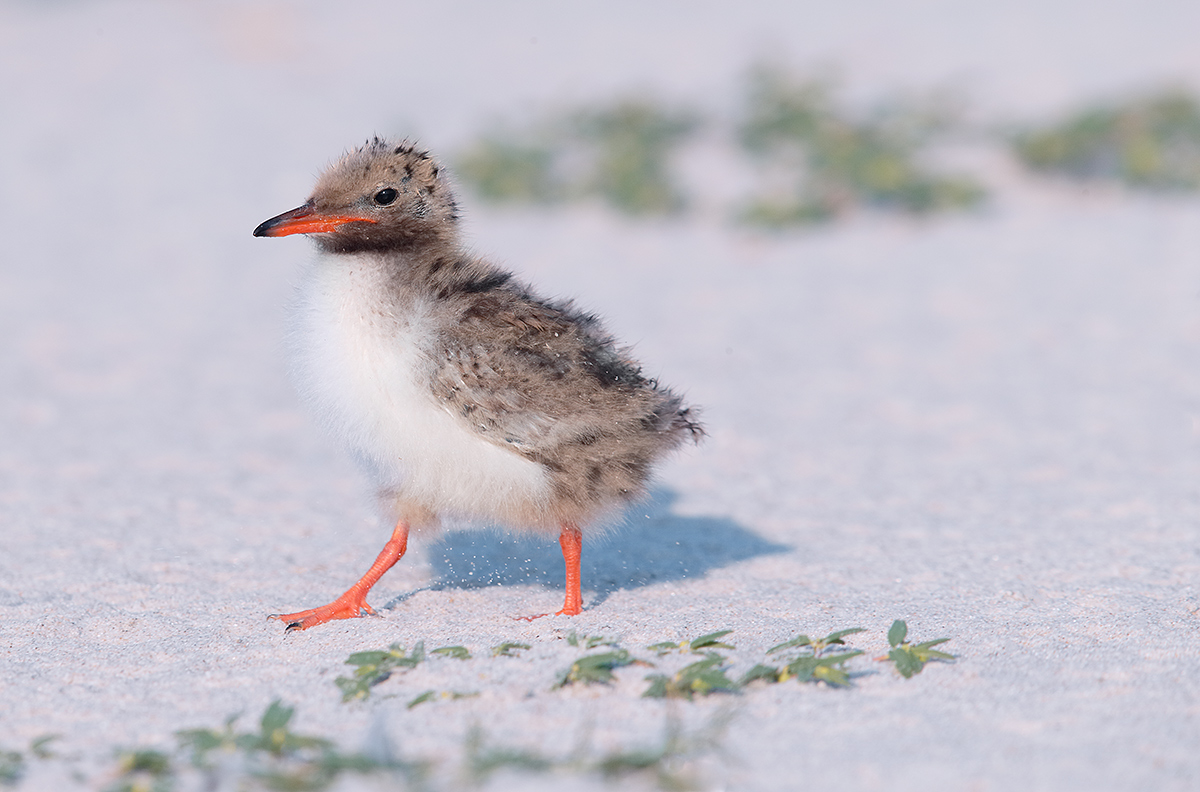
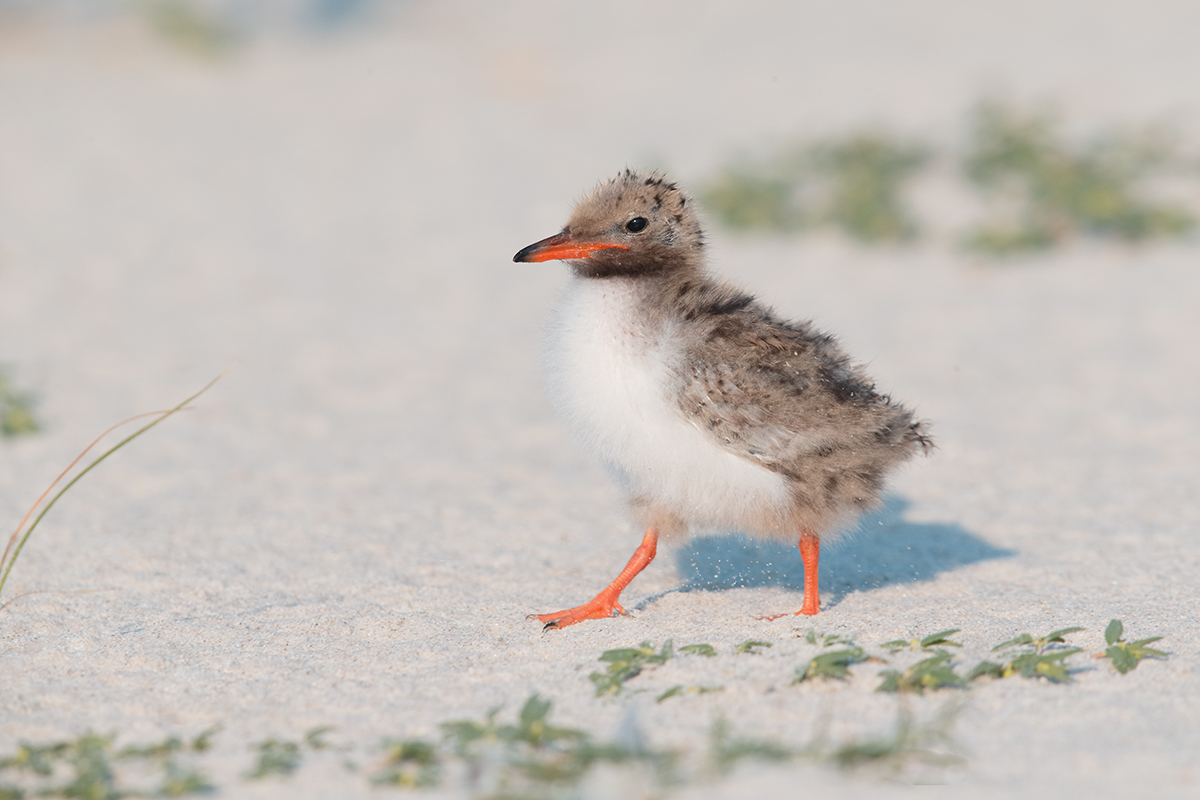
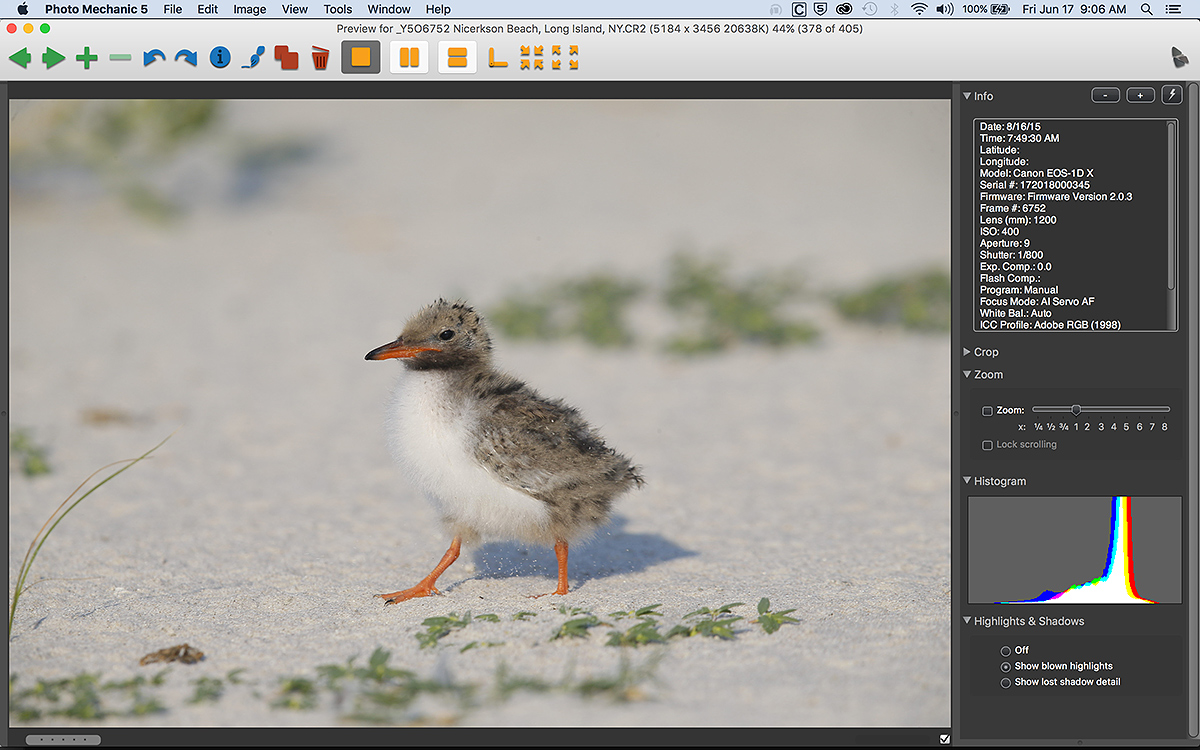
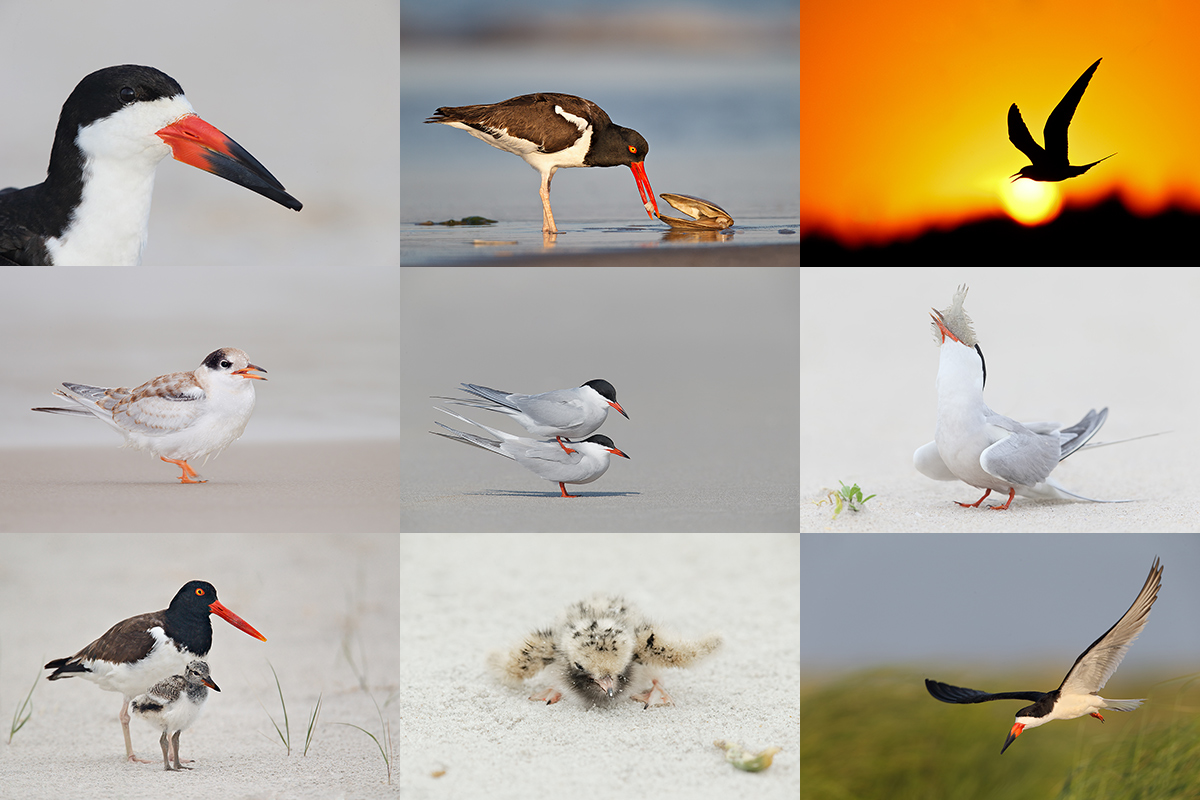
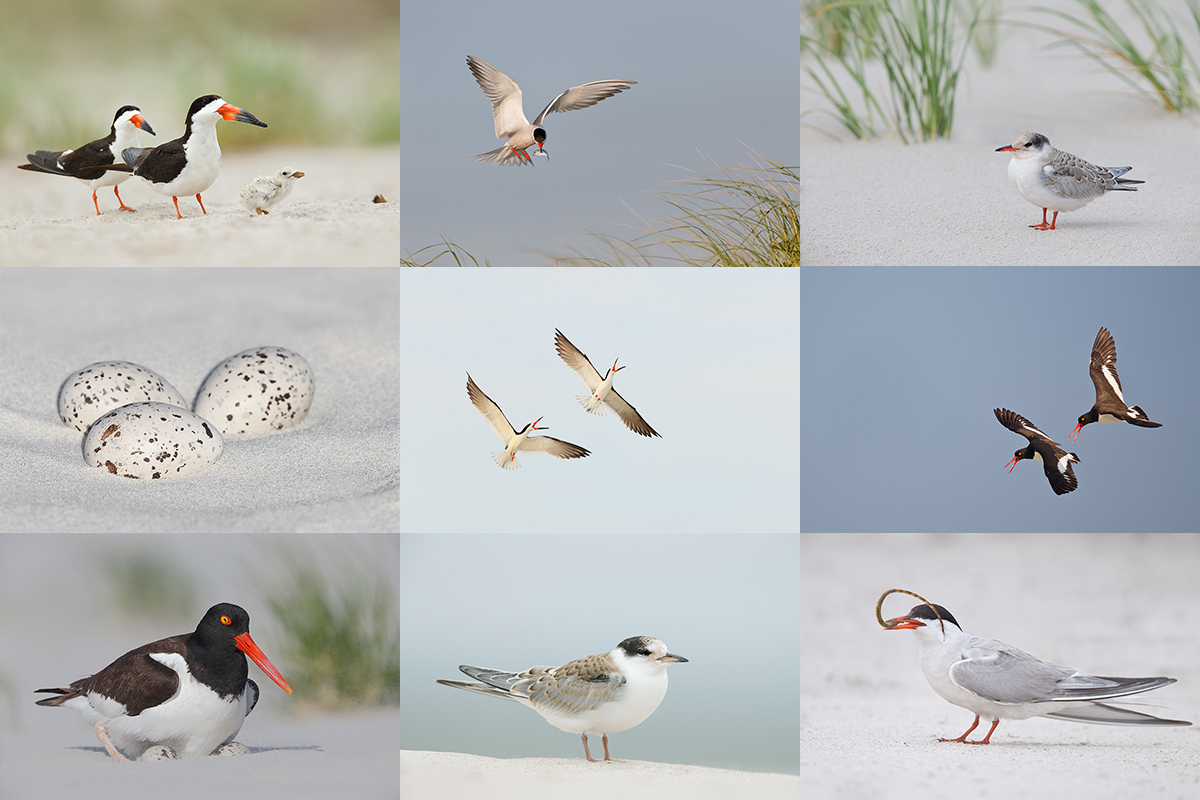













Which crop do you like best, the crop in Image #1 or the crop in Image #2? Why?
I like #2 with the space in front of the chick and the green on all sides framing it. Or I might try a little more crop from left and top then remove tips of grass blades on left. BUT, I like it as is.
Which color do you like best, the color in Image #1 or the color in Image #2? Why?
I like the color in #2. I perceive sand as being more yellow than blue, as it is in #1. But when I check on the numbers on the white in the chick’s breast feathers, #1 is closer to real white-
about 235, 230, 234 while #2 is heavy on red. However I still like the sand color better in #2
Overall, which image do you prefer? Why?
#2 for the reasons above
Like most of the other reviewers, i tend to prefer the cropping in #2 in most situations. In this particular photo, i must say i prefer the crop in #1 because of what it does with the background components – i feel it creates a better overall print, if you wanted to hang that on your wall.
I like the color in #1 better also.
While the grass in #2 might attract the eye and be a distraction, i like it there and would not remove it. Almost wish there were a few more blades of grass.
I prefer the crop on Image 2. There is more room for the bird to move through the frame. I like the grass on the edge as a leading line and also a destination for the bird and I also prefer the warmer color.
I prefer the crop on the #2 photo but rhe colour of #1 makes the bird stand out more. I do not object to the grass as for me it leads the eye to the bird
Hi, Artie. What a great trip that was. 🙂 The second image looks very slightly brighter and less contrasty to me than the first, and in that respect, I prefer the first. You have trained me so well to give the bird space in front of it that I prefer the cropping of the second image. I might have had that preference even without your training. As far as the color is concerned, I notice that the first image is slightly cooler (bluer) only by careful comparison with the second. If not for that I’d be perfectly satisfied with the color in either image; after the comparison I slightly prefer the warmer color of the second one. I can’t decide about the grass. It provides some framing and sense of place but also is very slightly distracting. I could go either way. I slightly prefer image 2.
Hope Mayas dance recital was great! Love the little chick. Maybe a cooler version of #2, minus the edge grasses.
I also like image 2 better. Better color, better framing. The strands of grass draw you to the chick, so I would leave them.
What a cutie!
I prefer image #1.
More detail visible, especially in front of the eye.
Cleaner and brighter than image#2.
However, the crop is too tight: the chick is too close to the left of the photo.
So I prefer the image #2 crop.
But image #2 is too yellowish for my taste compared with #1. Seeing image #2 on its own with no comparison I would probably be ok with it.
The blade of grass gives the image a sense of place and framing and I would keep it.
I actually really like the original image you show in Photo Mechanic, without cropping, and would like to see the image #1 modifications applied to it.
I like the 2nd one better, but I would crop the top down a little to remove the green/blue in the upper left, and I’d crop the left in a little to remove the green on the left edge, and then I’d remove the grass. That’s all 🙂
Mike
I prefer the orangey colour of image 2 as well as the crop giving more space in front of the chick, also image 2.
In my opinion, the crop on the second image is better as it gives more room where the bird was looking/heading. The color on the first is to saturated. I would remove the grass twigs.